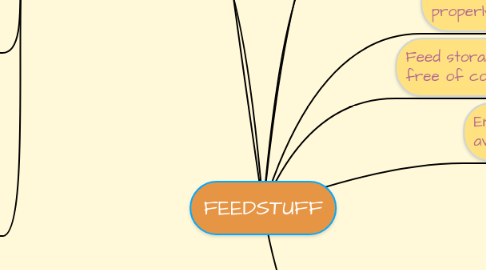
1. storage method
1.1. climatic condition
1.2. production capacity
1.3. use of antioxidant and transport
1.4. marketing arrangements
2. Types of storages
2.1. Bulk storage (from production to loading on transport vessels, becomes simpler, cheaper and results in a considerable saving in manpower used in maintenance, filling, weight control and storage of bags)
2.1.1. Hopper bottom bins
2.1.2. flat storage bins
2.1.3. Liquid tanks
2.2. storage shed( single or multistoried construction)
2.2.1. Owing to the weight and the pressures exerted on the walls.usually single floor construction
2.2.2. multistorage
2.3. silos
2.3.1. good protection to meal during storage and increase the flexibility in handling
2.3.2. types of silo
2.3.2.1. cylindrical silos
2.3.2.2. square/rectangular cross-section
2.3.2.3. bunker silo
2.3.2.4. tower silo
2.3.2.5. open trench
2.4. Medicated feed additive storage( store medicated feed additives separate from all other feed)
2.4.1. to reduce cross-contamination between medicated and non-medicated feeds
2.4.2. Use separate handling and feeding equipment
2.4.3. flush and/or clean mixing, handling, storage and feeding equipment by physical means
3. must be protected from moisture
4. Should be insulated
4.1. To avoid condensation and drip at night with consequent localized mould growth and lumping
5. Ensure all bins and silos are labeled properly.
6. Feed storage facilities dry,clean, and free of contamination
7. Ensure all the equipment functioning to avoid unsafe feed contamination
8. storage problem
8.1. weight loss
8.1.1. Insect population.Usually in grain or oil cakes
8.2. Quality loss
8.2.1. Most stored feed material undergo some chemical changes that alter their flavor and nutritive value. Quality loss sometime it can be because of insect attack on feedstuff
8.3. Economic loss
8.3.1. Must to be ready incurred loss such as, inspection, prevention and control to maintain quality standard
